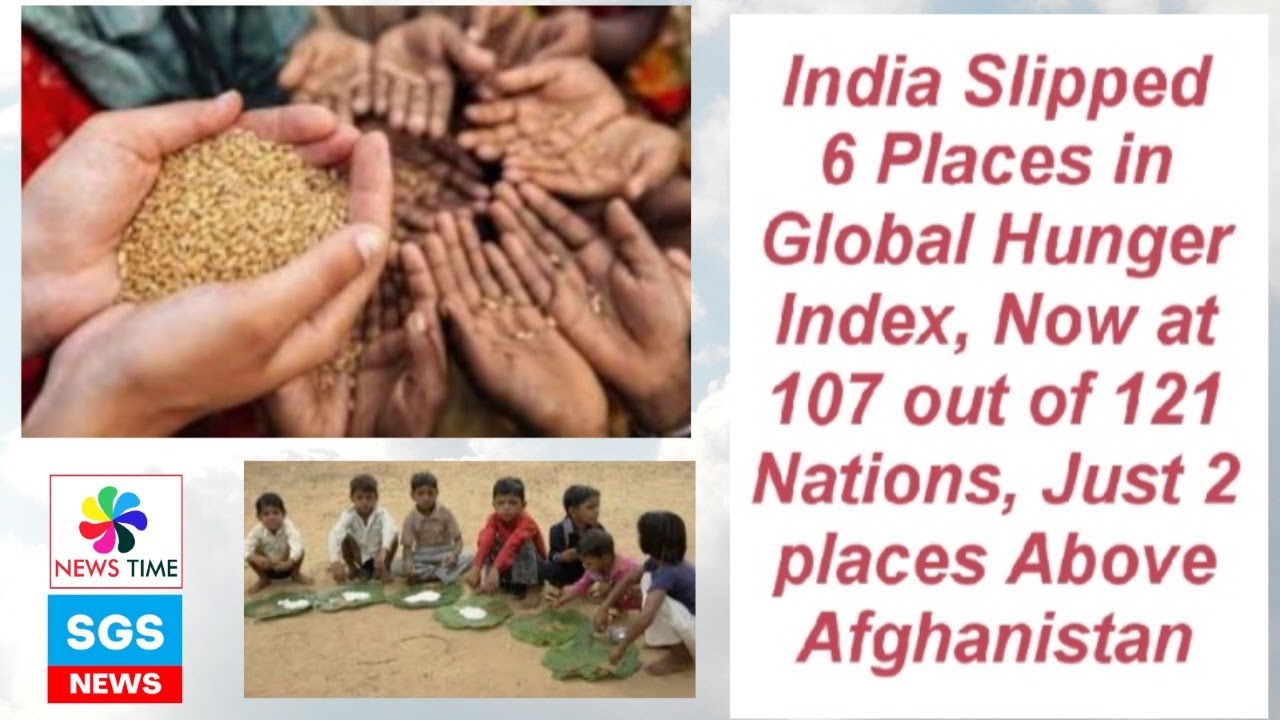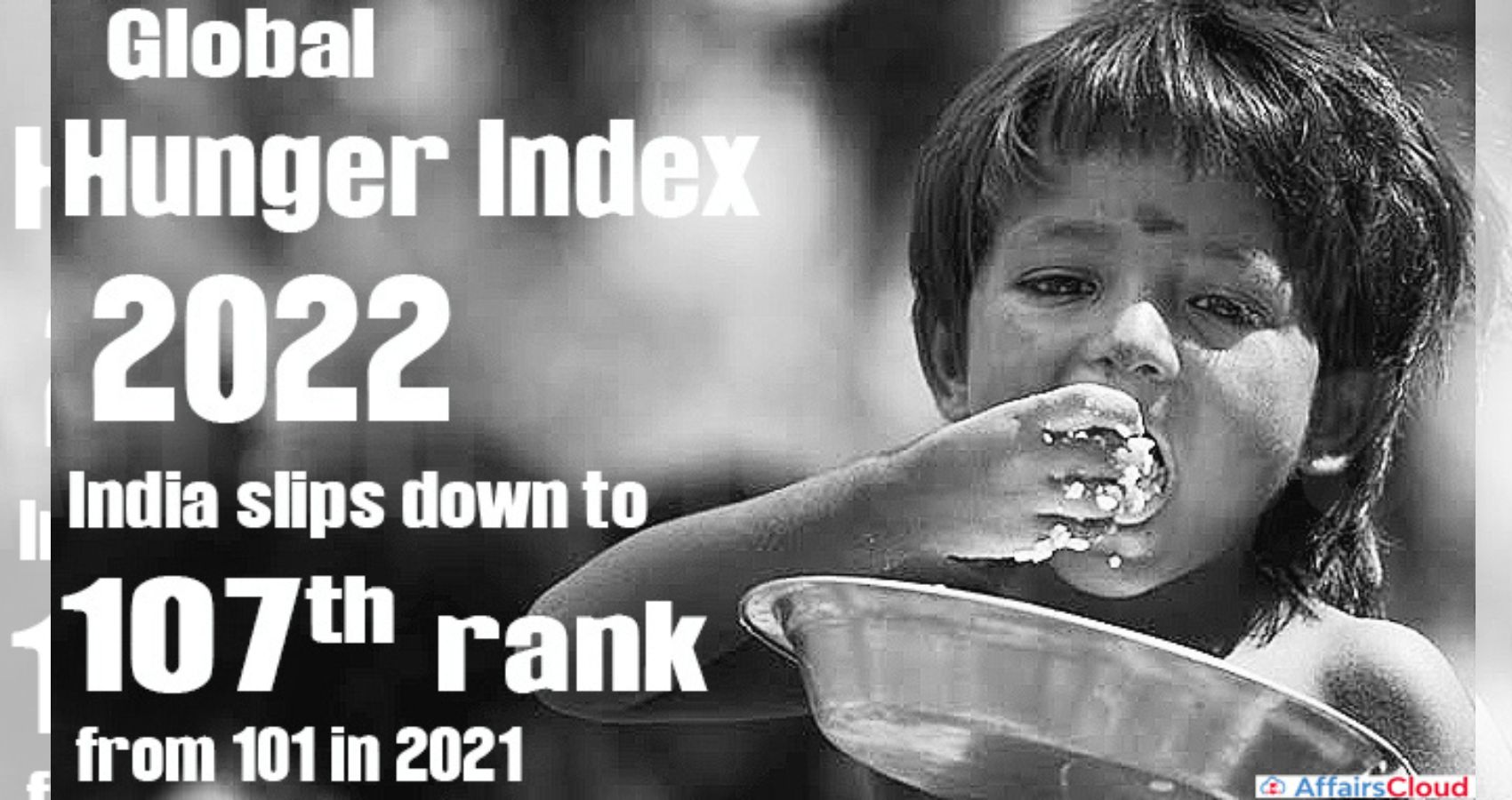In the 2022 Global Hunger Index, India ranks 107th out of the 121 countries with sufficient data to calculate 2022 GHI scores. India was ranked 101st in the 2021 ranking.
With a score of 29.1, India has a level of hunger that is serious. It was 28.2 in 2014. The higher the score, the worse is the situation, according to the methodology. There are five levels of hunger severity, according to this methodology. Scores of ≤ 9.9 are Low; 10.0–19.9 are Moderate; 20.0–34.9 are Serious; 35.0–49.9 are Alarming; and ≥ 50.0 are Extremely Alarming.
At 19.3 per cent, according to the latest data, India has the highest child wasting rate of all countries covered in the GHI. This rate is higher than it was in 1998-1999, when it was 17.1 per cent. Child wasting is the share of children under the age of five who have low weight for their height, reflecting acute undernutrition.
Nepal is ranked higher at 81, Bangladesh at 84 and even Pakistan at 99. India is ranked below African countries like Sudan, Congo, Ethiopia, Nigeria, and Rwanda.
The Global Hunger Index is a peer-reviewed annual report, jointly published by Concern Worldwide and Welthungerhilfe, designed to comprehensively measure and track hunger at the global, regional, and country levels. The aim of the GHI is to trigger action to reduce hunger around the world.
According to the data analysts, since 2000, India has made substantial progress, but there are still areas of concern, particularly regarding child nutrition.
 India’s GHI score has decreased from a 2000 GHI score of 38.8 points, considered alarming, to a 2022 GHI score of 29.1, considered serious. India’s proportion of undernourished in the population is considered to be at a medium level, and its under-five child mortality rate is considered low.
India’s GHI score has decreased from a 2000 GHI score of 38.8 points, considered alarming, to a 2022 GHI score of 29.1, considered serious. India’s proportion of undernourished in the population is considered to be at a medium level, and its under-five child mortality rate is considered low.
While child stunting has seen a significant decrease — from 54.2 per cent in 1998-1999 to 35.5 per cent in 2019-2021 — it is still considered very high.
Each country’s GHI score is calculated based on a formula that combines four indicators that together capture the multidimensional nature of hunger:
Undernourishment: the share of the population with insufficient caloric intake.
Child stunting: the share of children under age five who have low height for their age, reflecting chronic undernutrition.
Child wasting: the share of children under age five who have low weight for their height, reflecting acute undernutrition.
Child mortality: the share of children who die before their fifth birthday, partly reflecting the fatal mix of inadequate nutrition and unhealthy environments.
Hunger is usually understood to refer to the distress associated with a lack of sufficient calories. The Food and Agriculture Organization of the United Nations (FAO) defines food deprivation, or undernourishment, as the habitual consumption of too few calories to provide the minimum dietary energy an individual requires to live a healthy and productive life, given that person’s sex, age, stature, and physical activity level.
Undernutrition goes beyond calories and signifies deficiencies in any or all of the following: energy, protein, and/ or essential vitamins and minerals. Undernutrition is the result of inadequate intake of food in terms of either quantity or quality, poor utilization of nutrients due to infections or other illnesses, or a combination of these immediate causes. These, in turn, result from a range of underlying factors, including household food insecurity; inadequate maternal health or childcare practices; or inadequate access to health services, safe water, and sanitation.
Malnutrition refers more broadly to both undernutrition (problems caused by deficiencies) and overnutrition (problems caused by unbalanced diets that involve consuming too many calories in relation to requirements, with or without low intake of micronutrient-rich foods). Overnutrition, resulting in overweight, obesity, and noncommunicable diseases, is increasingly common throughout the world, with implications for human health, government expenditures, and food systems development. While overnutrition is an important concern, the GHI focuses specifically on issues relating to undernutrition. (IndicaNews)
India Slips To 107 Out 121 In Global Hunger Index











